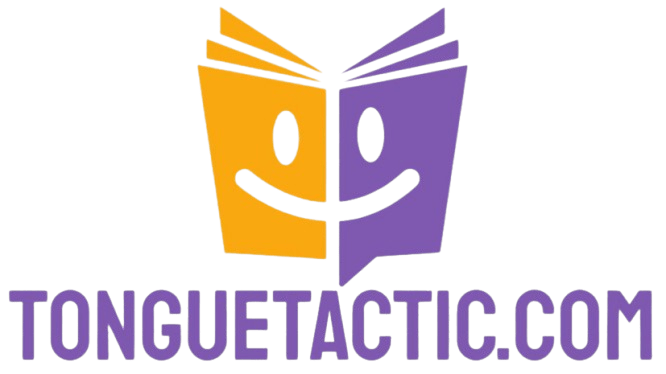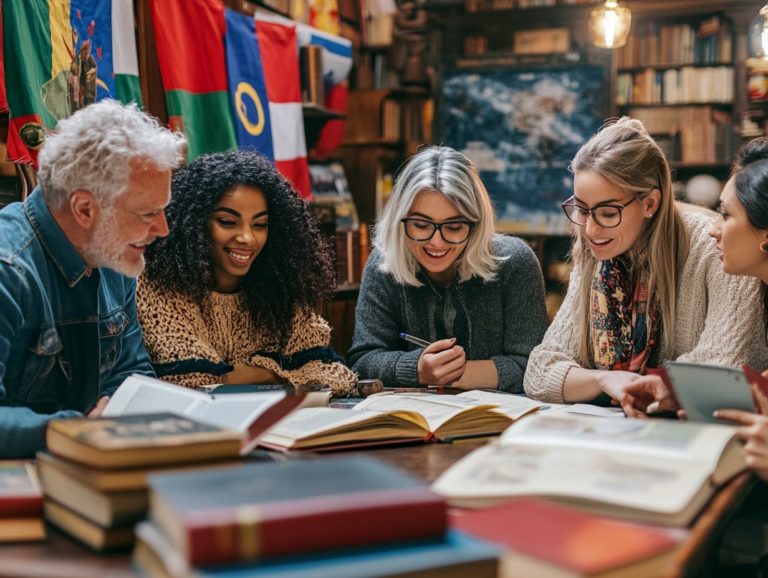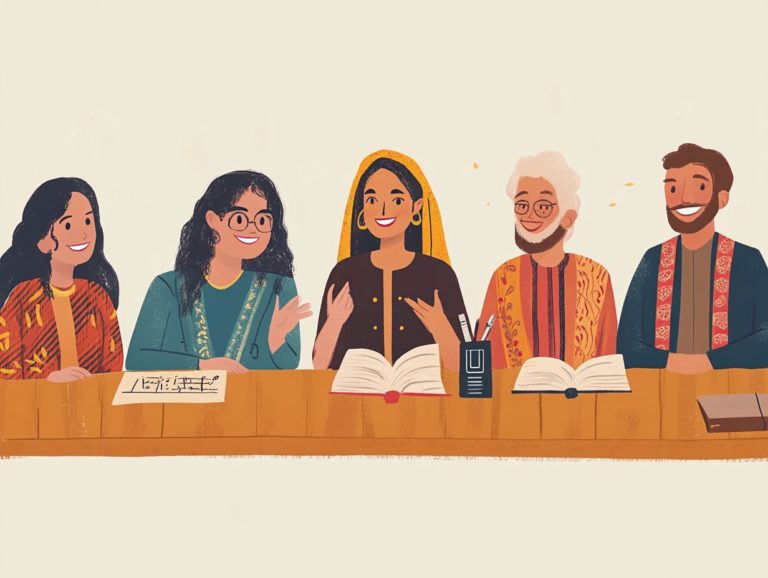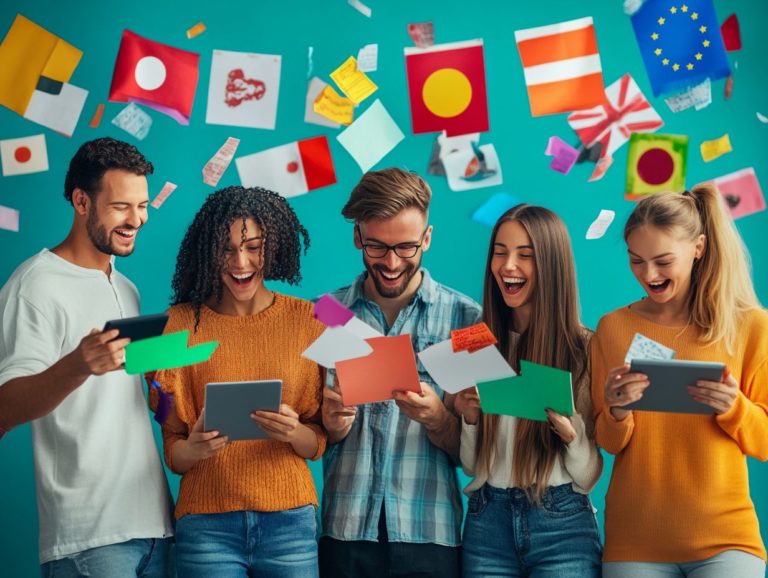7 films that showcase language and culture
Language and culture are intricately woven into the fabric of your everyday life, often shaping your identity and experiences in profound ways.
This exploration highlights seven compelling films that showcase the significant impact of language on culture and human connection. From the humorous mishaps in The Gods Must Be Crazy to the poignant cultural clashes in The Kite Runner, each film provides unique insights into how language can either bridge gaps or create misunderstandings.
Jump into these films to discover powerful themes that will change how you see language and culture!
Contents
- Key Takeaways:
- 1. Lost in Translation – Exploring the Language Barrier
- 2. Babel – The Impact of Language on Culture
- 3. “The Kite Runner” – Cultural Differences and Conflict
- 4. “Crouching Tiger, Hidden Dragon” – The Importance of Tradition
- 5. “The Farewell” – Navigating Cultural Expectations
- 6. “The Gods Must Be Crazy” – Humor and Misunderstandings
- 7. “Slumdog Millionaire” – The Influence of Language on Identity
- How Do These Films Portray Language and Culture?
- What Are the Common Themes Among These Films?
- How Do These Films Challenge Stereotypes and Preconceived Notions?
- What Can Viewers Learn About Language and Culture from These Films?
- How Do These Films Reflect Real-Life Language and Cultural Experiences?
- What Impact Do These Films Have on Language and Cultural Understanding?
- Frequently Asked Questions
- What are 7 films that showcase language and culture?
- How do these films showcase language and culture?
- What are some examples of how language and culture are portrayed in these films?
- Do these films only focus on one specific language or culture?
- Why are these films important for understanding language and culture?
- Are these films suitable for all ages?
Key Takeaways:
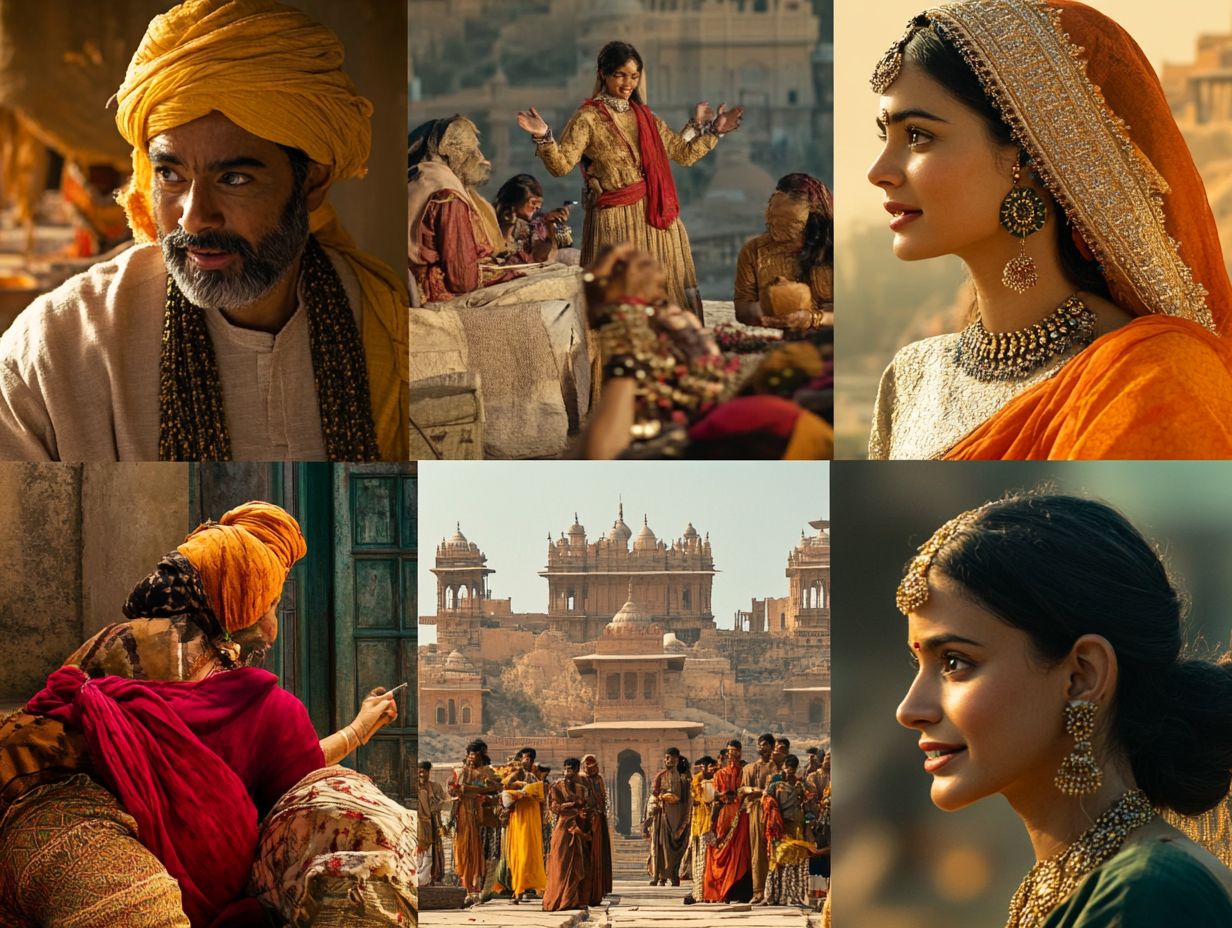
- Language barriers lead to isolation, as shown in Lost in Translation and Babel.
- Cultural conflicts are explored in The Kite Runner and Crouching Tiger, Hidden Dragon.
- The Farewell and Slumdog Millionaire highlight how culture and language shape identity.
1. Lost in Translation – Exploring the Language Barrier
Lost in Translation masterfully illustrates the complexities of communication between cultures. It reveals how language barriers can lead to misinterpretations and misunderstandings in a foreign environment.
As you navigate the interactions between characters, you’ll notice the profound impact language has on personal connections and cultural identity. This underscores the importance of cultural self-awareness in overcoming challenges.
Throughout the characters’ journeys, reflect on your own cultural values and experiences. This fosters a deeper appreciation for the intricacies of intercultural relationships.
The film captures these dynamics with beautifully crafted scenes where moments of silence often resonate more powerfully than words. The interactions between the two leads spotlight how their attempts to bridge the gap through gestures, humor, and shared experiences convey deeper meanings.
By incorporating film clips into discussions, educators can illustrate these communicative acts. This demonstrates how misunderstandings can arise from cultural differences.
This approach enriches your understanding of the foreign language you are learning. It also encourages you to empathize with others’ backgrounds, ultimately enhancing your language acquisition through real-life cultural contexts.
2. Babel – The Impact of Language on Culture
Babel unfolds as a compelling narrative that delves into the impact of language on cultural understanding and human relationships. It weaves together multiple storylines that highlight the consequences of language barriers across various cultures and societal contexts.
As you immerse yourself in this intricate tapestry, you ll see how the characters unique backgrounds shape their perceptions and interactions. Each segment of the film reveals how language not only facilitates communication but also fuels misunderstandings, influencing relationships on both personal and societal levels.
As you witness the ripple effects of these disconnects, reflect on similar real-life situations where a lack of cultural awareness can obstruct effective communication. This narrative serves as a vital reminder for educators to embrace cultural differences, tailoring their teaching methods to create an inclusive environment that fosters mutual understanding and respect among diverse student populations.
3. “The Kite Runner” – Cultural Differences and Conflict
The Kite Runner masterfully explores the complex world of cultural differences and the conflicts they can spark, all set against the backdrop of Afghanistan’s turbulent history. The film delves into themes of friendship, betrayal, and redemption.
As you journey alongside the protagonist, you must reflect on your own cultural values and consider how these traditions shape your interpersonal relationships. This provides rich material for engaging discussions in educational contexts.
As the protagonist navigates his childhood friendships, particularly with Hassan, the stark contrasts between their social standings and ethnic backgrounds become painfully clear. These differences often lead to misunderstandings and profound conflict, culminating in a devastating incident that alters their friendship irrevocably.
The emotional aftermath reminds us powerfully of how cultural rifts can fracture bonds, urging individuals to confront their biases and assumptions. This poignant narrative not only presents a tale of redemption but also inspires educators to weave similar themes into their teaching.
By facilitating conversations about empathy and understanding in our multicultural world, you can create an inclusive environment that celebrates diversity, encouraging students to reflect on their own identities and experiences.
4. “Crouching Tiger, Hidden Dragon” – The Importance of Tradition
Crouching Tiger, Hidden Dragon beautifully embodies the significance of tradition within its narrative, weaving a rich tapestry of Chinese culture through martial arts and storytelling. The film invites you to witness the characters’ struggle between honoring cultural traditions and pursuing their personal desires, while revealing how these traditions shape cultural identity and relationships.
Its narrative depth encourages you to engage in thoughtful discussions about the values embedded in various cultures and their impact on intercultural communication. The film illustrates the tension between personal ambition and societal expectations, especially in pivotal scenes that showcase the characters’ significant choices.
For instance, Jen’s bold defiance of her predestined path stands in stark contrast to the unwavering loyalties exhibited by Master Li Mu Bai and Shu Lien. These dynamics create a profound commentary on the sacrifices made in the name of love and duty, shining a light on how deeply ingrained cultural practices influence individual motivations and societal expectations.
This raises important questions about cultural conformity and the delicate balance between personal fulfillment and tradition.
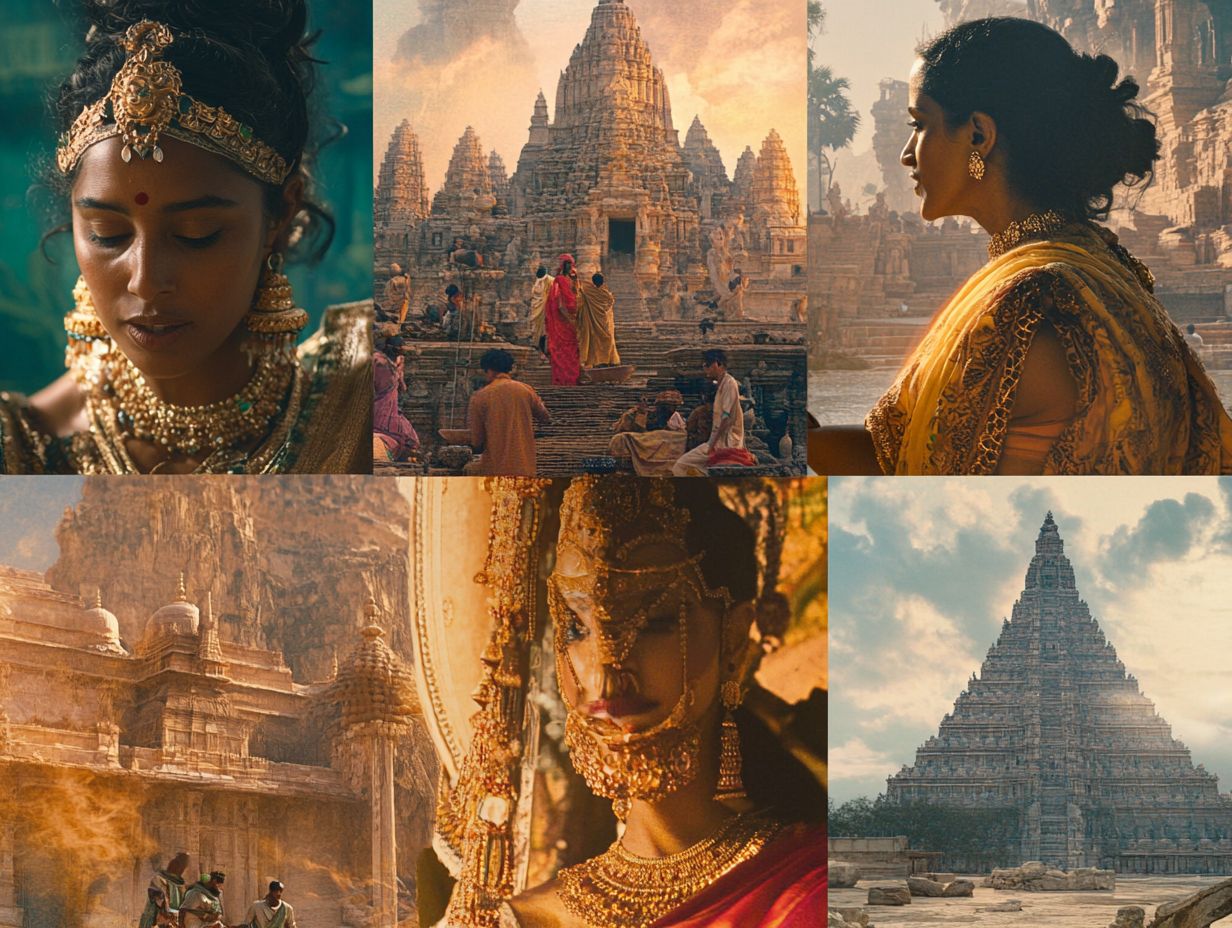
“The Farewell” expertly navigates the intricate dance of cultural expectations, particularly in the context of Asian family dynamics. It offers a poignant exploration of cultural identity while highlighting the tension between tradition and personal beliefs.
As you follow the protagonist’s journey, the film invites you to reflect on your own cultural values and how they shape your familial relationships and expectations. Its nuanced storytelling encourages meaningful discussions about the essence of cultural understanding and how traditions can impact personal fulfillment and decision-making.
In a pivotal scene, you witness the protagonist struggling with the burden of deception as her family gathers under the guise of a wedding to hide the terminal illness of their cherished matriarch. This moment perfectly encapsulates the emotional tug-of-war between adhering to cultural expectations and honoring one’s beliefs, revealing the extraordinary lengths family members will go to maintain their collective unity.
Explore films like “Minari” and “Crazy Rich Asians” for more on these themes and think about how they relate to your experiences.
6. “The Gods Must Be Crazy” – Humor and Misunderstandings
The Gods Must Be Crazy cleverly employs humor to illuminate misunderstandings that arise from cultural differences. It crafts a comedic narrative that reflects on the absurdities of communication between different cultures.
By contrasting the simplicity of tribal life with the complexities of modern civilization, the film prompts you to think about how cultural values shape perception and behavior. This character-driven comedy entertains and acts as a springboard for discussions on cultural exchange and the humorous nuances of culture clash.
With its playful approach to serious themes, the film demonstrates how laughter can bridge divides and cultivate empathy among audiences from diverse backgrounds. Through quirky situations and relatable characters, the narrative offers a distinctive lens to examine deeper societal issues, encouraging you to reflect on your own cultural assumptions.
The witty dialogues and situational humor remind you that, despite profound differences, shared human experiences can pave the way to understanding. This sparks important conversations about how similar comedic undertones across various cultures can strengthen connections, fostering a richer appreciation for each other’s traditions and perspectives.
7. “Slumdog Millionaire” – The Influence of Language on Identity
“Slumdog Millionaire” powerfully illustrates how language shapes identity. It follows the protagonist’s remarkable journey from the slums of Mumbai to the bright lights of a game show. The film explores themes of survival, love, and how language serves as a tool for personal and cultural identity.
As you follow the protagonist’s story, you reflect on how language influences cultural experiences and the skills needed to navigate life’s complexities. This narrative reveals that mastering linguistic nuances allows the protagonist to access opportunities that were once beyond reach. It serves as a broader commentary on the vital role language plays in defining self-identity.
Key moments, especially interactions with various characters and the game show host, highlight this dynamic. Language is not just a means of communication; it is a vehicle for aspiration.
This analysis offers valuable insights for educators. It suggests innovative ways to inspire foreign language students by highlighting the profound relationship between learning a language and personal growth. It encourages them to view fluency as a gateway to understanding diverse identities and cultures.
How Do These Films Portray Language and Culture?
These films weave together language and culture, illustrating how deeply intertwined they are in shaping human experiences. They offer you valuable insights into the complexities of communication between different cultures, including 7 global cultures and their unique languages, and cultural identity.
By presenting a variety of narratives, these films invite you to engage with cultural differences and reflect on their implications for personal relationships and societal norms. Each film acts as an educational resource, sparking discussions about language barriers, cultural traditions, and the critical role of understanding one s own culture in fostering connection within diverse communities.
Take, for example, one film where a character grapples with language fluency. This struggle sheds light on the challenges of connecting with others and emphasizes the importance of patience in intercultural dialogues.
In another film, you witness vibrant cultural celebrations that highlight how language not only conveys meaning but also embodies shared histories and values within a community. Through these varied portrayals, these films not only shine a light on the intricacies of language and culture but also equip educators with dynamic tools for teaching empathy and global citizenship. This deepens students’ appreciation for diverse cultures.
What Are the Common Themes Among These Films?
These films explore how cultures communicate, how cultural differences affect relationships, and the role of personal identity in diverse settings.
Each film presents these themes uniquely, showcasing the richness of human experiences and cultural interactions. They provide valuable material for discussions about empathy and respect across cultures.
Consider a film where a character struggles to adapt to a new country. This story can spark meaningful discussions about empathy, allowing you to relate it to your own experiences or those of your peers.
By analyzing these journeys, you can appreciate the importance of self-awareness and personal identity as individuals face cultural diversity.
These narratives foster mutual respect and create collaborative learning environments, enriching classroom discussions by sharing cultural stories.
How Do These Films Challenge Stereotypes and Preconceived Notions?
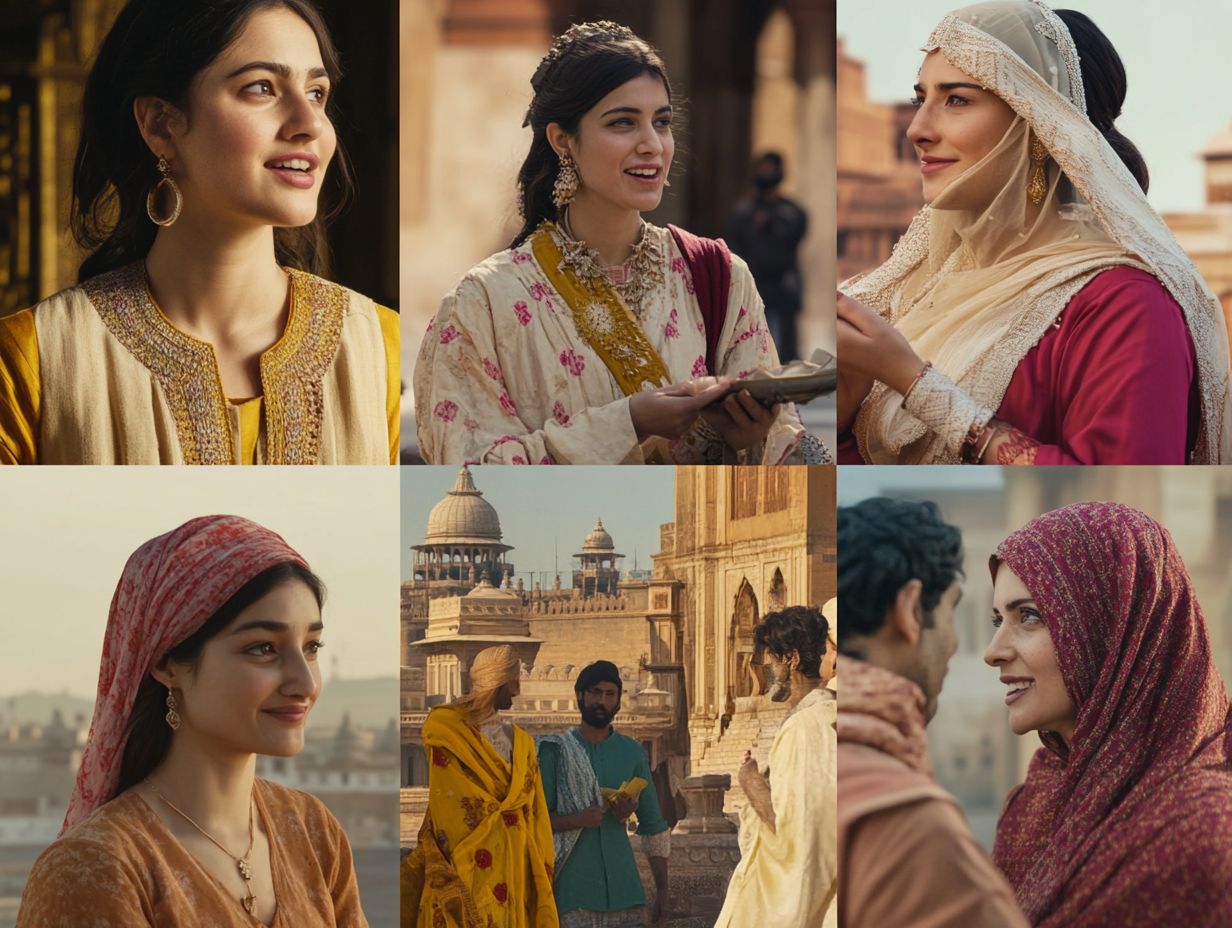
These films break down stereotypes by presenting complex characters and stories that challenge traditional cultural representations. They encourage you to rethink your assumptions about different identities.
Through engaging storytelling, each film provides a fresh perspective that promotes understanding and empathy, highlighting the complexities of human experiences.
Engaging with these narratives invites reflection on personal biases and introduces the rich variety of cultural experiences beyond stereotypes.
For example, “Crazy Rich Asians” portrays a wealthy Asian family, breaking the stereotype of a monolithic group. Similarly, “Pan’s Labyrinth” blends fantasy with the harsh realities of post-Civil War Spain, revealing cultural intricacies.
These films not only entertain; they spark discussions on race, privilege, and belonging. They urge you to see individuals as complex beings shaped by their cultures, not just labels.
This engagement is crucial for fostering an inclusive understanding of diverse cultural experiences.
What Can Viewers Learn About Language and Culture from These Films?
These films offer valuable insights into language and culture. You’ll learn about effective communication, how cultural values influence behavior, and the importance of cultural sensitivity in interactions.
Each story provides a glimpse into the complexities of cultural experiences, showing how language shapes identities and social dynamics. These films go beyond entertainment; they are tools for understanding intercultural communication.
For instance, *Lost in Translation* illustrates how language barriers can lead to misunderstandings while also creating strong connections. *The Namesake* highlights the challenges faced by immigrants, emphasizing the role of cultural heritage in identity formation.
These narratives reveal that mastering a language involves understanding cultural nuances, not just vocabulary. Engaging with these stories helps you reflect on your biases and improves your ability to navigate diverse environments.
To further explore these themes, check out *Babel* and *Crouching Tiger, Hidden Dragon* for a deeper understanding of the relationship between language, culture, and interpersonal dynamics.
How Do These Films Reflect Real-Life Language and Cultural Experiences?
These films beautifully reflect real-life language and cultural experiences, showcasing the challenges and triumphs individuals encounter in diverse cultural contexts. They emphasize the importance of cultural understanding in everyday interactions.
Through their narratives, you ll see how language shapes relationships and influences identity. These stories offer a compelling mirror to the complexities of communication between different cultures. Engaging with these films challenges you to find parallels to your own experiences, enriching your understanding of cultural dynamics.
Scenes depicting families navigating cultural festivals or individuals grappling with language barriers resonate deeply. They illustrate how shared moments whether in a bustling market or a heartfelt celebration capture the essence of community. Such portrayals spotlight everyday realities and serve as powerful educational tools.
These films also enable educators to spark discussions around cultural relativity and empathy. By weaving these cinematic narratives into the classroom, you can create a vibrant tapestry of dialogue, encouraging students to explore their cultural identities while appreciating the diversity that enriches society.
What Impact Do These Films Have on Language and Cultural Understanding?
These films have a remarkable ability to shape your understanding of language and culture. They offer a window into diverse perspectives and the intricacies of communication between different cultures. By showcasing relatable characters and realistic scenarios, they encourage you to hone thinking skills like empathy and critical thinking skills essential for navigating the rich tapestry of global cultures.
These films are also invaluable educational tools, sparking discussions that elevate cultural awareness and foster inclusivity.
Take, for example, films like “Coco” and “The Name of the Rose.” They don’t just tell engaging stories; they immerse you in the traditions and values inherent to their cultures. This type of storytelling invites you to engage with narratives that transcend mere entertainment, emphasizing the importance of family, language, and social norms.
Documentaries such as “Won t You Be My Neighbor?” present real-life situations that challenge your preconceived notions. They broaden your perspective and inspire critical dialogue about societal themes.
Ultimately, these cinematic experiences enhance your understanding of the world around you. They reinforce the vital importance of cultural sensitivity in our increasingly interconnected society.
Frequently Asked Questions
-
What are 7 films that showcase language and culture?
-
How do these films showcase language and culture?
-
What are some examples of how language and culture are portrayed in these films?
-
Do these films only focus on one specific language or culture?
-
Why are these films important for understanding language and culture?
-
Are these films suitable for all ages?
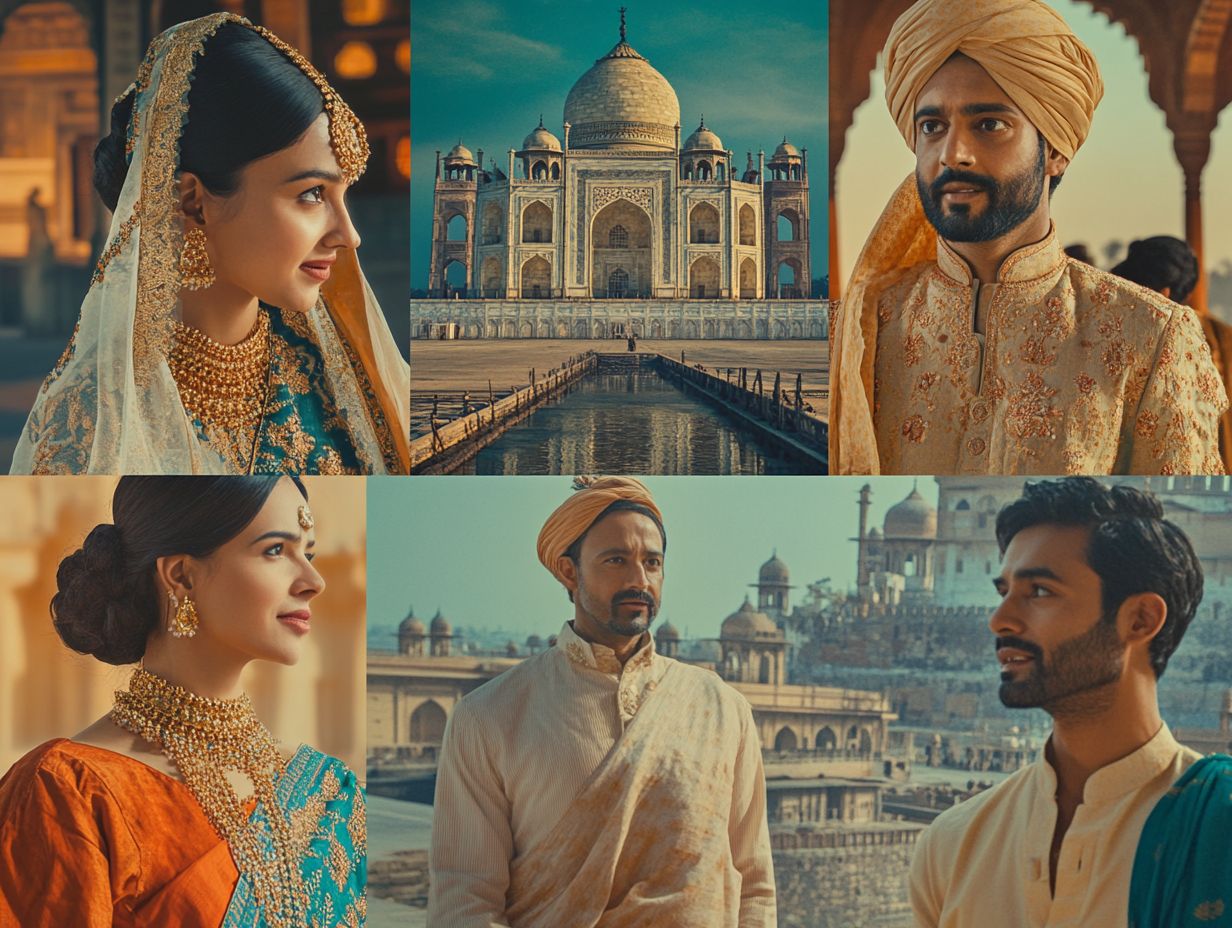
1. “Babel” (2006)
2. “Am lie” (2001)
3. “Spirited Away” (2001)
4. “Crouching Tiger, Hidden Dragon” (2000)
5. “Roma” (2018)
6. “Pan’s Labyrinth” (2006)
7. “Brooklyn” (2015)
These films feature diverse languages and cultures, highlighting their importance in shaping stories and characters. They also provide insights into the customs, traditions, and daily life of different communities.
In “Babel,” multiple languages show the interconnectedness of people worldwide. “Am lie” celebrates French culture and its influence on the characters’ lives. “Spirited Away” incorporates Japanese mythology and customs into its fantastical story.
No, these films showcase a variety of languages and cultures from different parts of the world. They offer a diverse and inclusive representation of various communities and their ways of life.
These films offer a unique perspective on the power and significance of language and culture in shaping identities and relationships. They promote cultural awareness and understanding among audiences.
Some of these films may have mature themes and content that may not be suitable for young children. It’s best to check the ratings and parental guidance warnings before watching with younger viewers.
In summary, these films not only entertain but also educate, offering invaluable insights into language and culture. They foster understanding and appreciation for the diverse world we live in, encouraging us all to engage with and learn from different perspectives.
